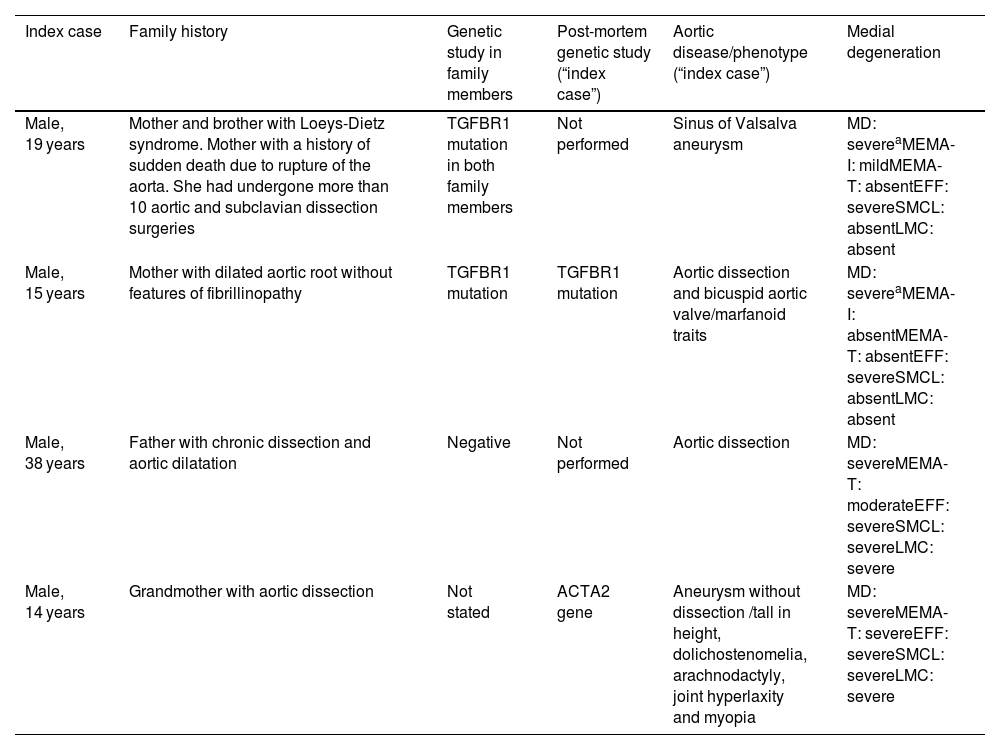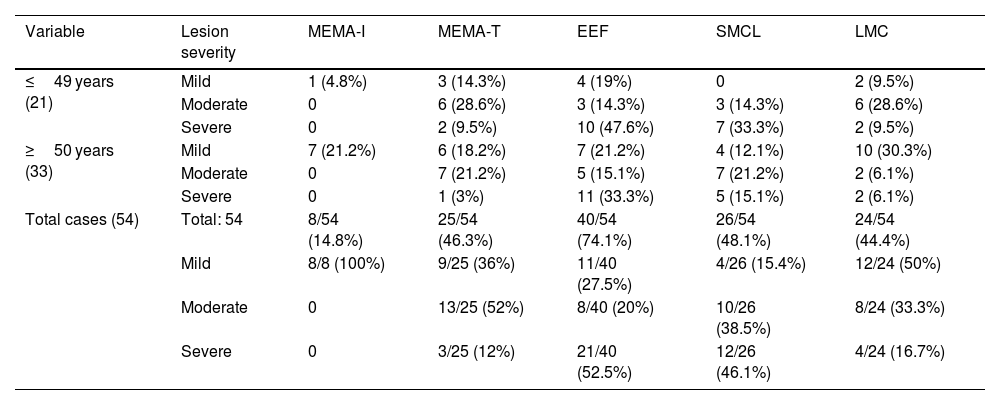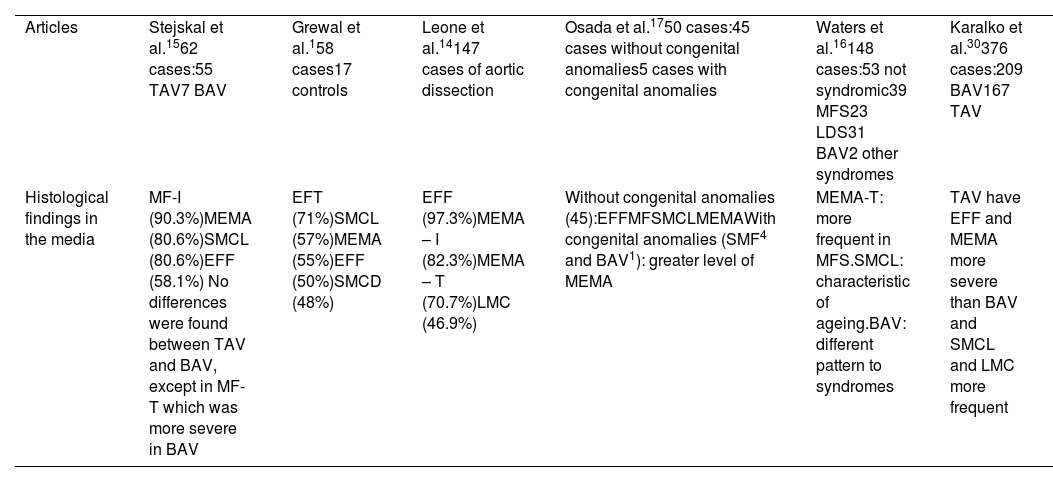Thoracic aortic dissection/rupture has a high mortality, constituting 3.9%–5.4% of sudden deaths (SD) in forensic series. Medial histopathological findings associated with these entities have received multiple terms and definitions. In 2016, the European Association for Cardiovascular Pathology and the Society for Cardiovascular Pathology published a consensus document, applied to surgical specimens, to unify criteria. The aim of this work is to assess its application in forensic autopsies. A secondary objective is to study inflammatory changes useful for dating.
Material and methodsAortic histological preparations of the 54 cases of SD due to aortic rupture/dissection studied between 2019 and 2022 were reviewed.
ResultsMedial degeneration was observed in 49 cases (90.8%) (severe in 42.9%). By lesions, the order of frequency was: fragmentation and/or loss of elastic fibres (74.1%), accumulation of extracellular mucoid matrix (61.1%), loss of smooth muscle cell nuclei (48.1%), and collapse of the media (44.4%). Some lesions of the consensus paper could not be assessed. No significant differences were found by age; presence or not of collagenopathies; or bi/tricuspid aortic valves. Granulation tissue or neutrophilic infiltrate was observed in those deceased with pain several days or <24 h before death, respectively.
ConclusionWith the application of the document, lesions in the media are found in >90% of cases and fundamental lesions can be studied. The inflammatory response to rupture/dissection appears to correlate with the timing of dissection/rupture.
La disección/rotura de aorta torácica tiene una alta mortalidad, constituyendo del 3,9-5,4% de las muertes súbitas (MS) en series forenses. Los hallazgos histopatológicos de la media asociados a estas entidades han recibido múltiples términos y definiciones. En 2016, la Asociación Europea de Patología Cardiovascular junto con la Sociedad de Patología Cardiovascular publicaron un documento de consenso, aplicado a muestras quirúrgicas, para unificar criterios. El objetivo de este trabajo es valorar su aplicación en autopsias forenses. Un objetivo secundario es estudiar cambios inflamatorios útiles para la datación.
Material y métodosSe revisaron las preparaciones histológicas de aorta de los 54 casos de MS por rotura/disección aortica estudiados entre 2019–2022.
ResultadosSe observó degeneración de la media en 49 casos (90,8%) (severa en 42,9%). Por lesiones, el orden de frecuencia fue: fragmentación y/o pérdida de las fibras elásticas (74,1%); acúmulo de matriz mucoide extracelular (61,1%); pérdida de núcleos de células musculares lisas (48,1%) y colapso de la media (44,4%). Algunas lesiones del documento no pudieron ser valoradas. No se encontraron diferencias significativas por edad; presencia o no de colagenopatías; o válvulas aórticas bi/tricúspides. Se observó tejido de granulación o infiltrado neutrofílico en fallecidos con dolor varios días o < 24 h antes de la muerte, respectivamente.
ConclusiónCon la aplicación del documento se encuentran lesiones en la media en >90% de los casos y pueden estudiarse las lesiones fundamentales. La respuesta inflamatoria frente a la rotura/disección parece correlacionarse con el momento de la disección/rotura.












